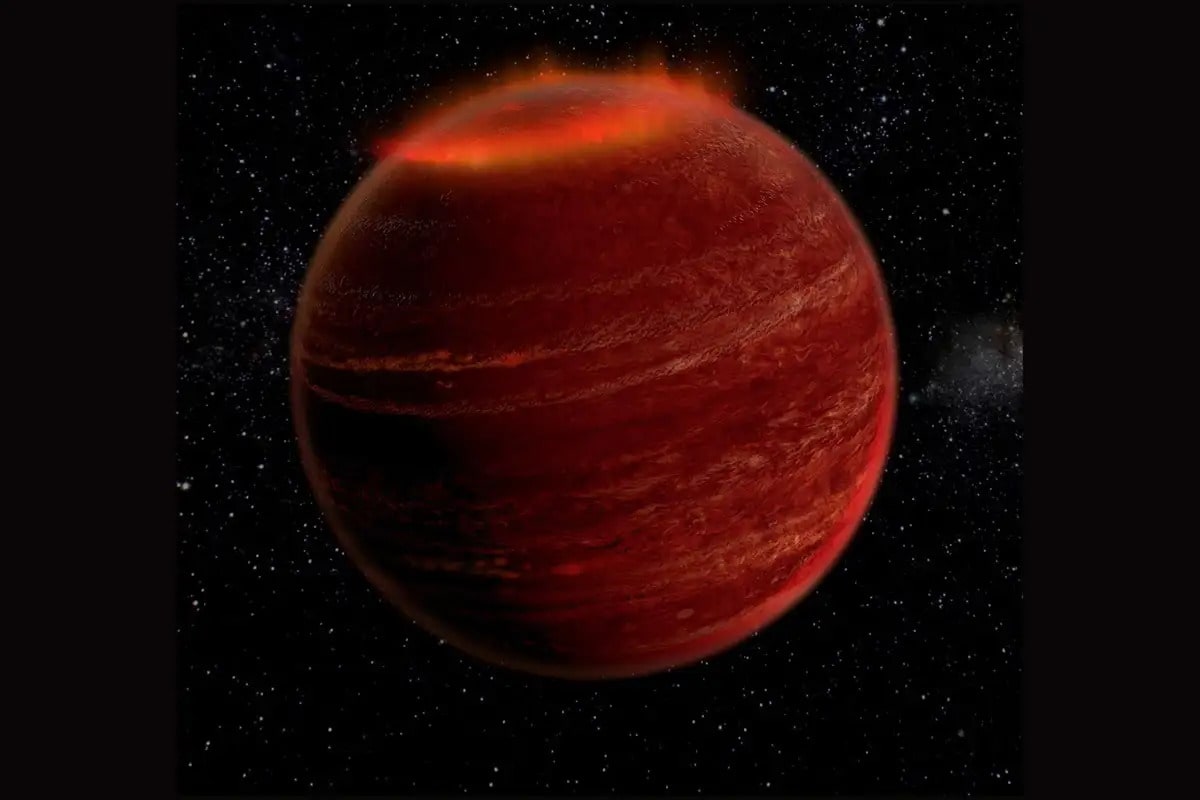Brown dwarfs are among the most mysterious objects in the universe, existing in a gray area between stars and planets. They are too massive to be considered planets but not massive enough to sustain the full nuclear fusion processes of stars. The discovery of these bodies marked a breakthrough in astronomy, as they help scientists study stellar evolution and the structure of galaxies. In this article, you will find fascinating facts about brown dwarfs that you might not have known. Some of them may completely change your understanding of space.
- Brown dwarfs lack sufficient mass to ignite sustained hydrogen fusion in their cores. Their mass typically ranges from 13 to 80 times that of Jupiter, which is not enough to classify them as true stars. As a result, they emit very little light, mostly in the infrared spectrum. This makes them difficult to detect with standard optical telescopes.
- Despite their faint glow, young brown dwarfs can be extremely hot. Their temperatures during the early stages of life can reach several thousand degrees Celsius. Over time, they cool down and become nearly invisible in visible light. This makes them particularly valuable for studying cooling processes in space.
- The atmospheres of brown dwarfs can contain clouds made of molten iron or silicate droplets. These objects rotate at high speeds, resulting in complex atmospheric dynamics. Observations suggest that massive storms may occur on their surfaces, similar to those seen on Jupiter. This indicates a rich and dynamic outer chemical environment.
- Some brown dwarfs emit strong radio waves similar to those produced by planets with magnetic fields. This suggests that they possess magnetospheres and experience active processes related to rotation and atmospheric ionization. In certain cases, even auroras have been detected. This makes them especially intriguing targets for radio astronomy.
- Brown dwarfs can have companions that resemble planets. In some systems, the companion’s mass is so large that it becomes difficult to determine which object is central. These systems challenge the traditional distinction between stars and planets. Studying them helps scientists understand how planetary systems form.
- These objects are ideal for exoplanet searches because they do not overpower telescopes with bright light. Their infrared emissions make it easier to detect warm planets orbiting around them. This greatly improves the chances of studying the atmospheres of those worlds. As a result, astronomers can learn more about potentially habitable environments.
- The first confirmed brown dwarf was discovered only in 1995, although their existence was predicted as early as the 1960s. The object, named Teide 1, was found in the constellation Taurus. Its discovery caused a major stir in the field of astrophysics. Since then, thousands of brown dwarfs have been identified.
- Some brown dwarfs formed in the early stages of our galaxy’s history. Due to their low levels of nuclear activity, they can remain stable for billions of years. This allows scientists to study the long-term evolution of the cosmos. Their age makes them valuable witnesses of the universe’s past.
- Certain brown dwarfs have incredibly high densities, sometimes greater than that of planets. Although relatively small, their mass can approach that of low-mass stars. This creates intense pressure within their interiors. Such conditions may alter the physical states of matter inside.
- Spectral analysis has revealed the presence of methane, water vapor, and even ammonia in the atmospheres of some brown dwarfs. This indicates complex chemistry, similar to that of gas giants. Such findings make them excellent laboratories for studying alien atmospheres. Analyzing their spectra also offers insights into distant planetary processes.
- Brown dwarfs can exist alone or as part of binary or multiple systems. They sometimes orbit normal stars or other brown dwarfs. These systems provide opportunities to study gravitational interactions in different celestial pairings. Their behavior enriches our understanding of stellar dynamics.
- There may be far more brown dwarfs in our galaxy than we currently observe. Due to their faintness, they can hide in interstellar space undetected. Scientists estimate their numbers could rival or even exceed those of regular stars. This suggests they may account for a significant portion of the Milky Way’s total mass.
- Some models predict that brown dwarfs could host planets with liquid water on their surfaces. This is possible if such planets have dense atmospheres and receive enough internal heat. Though still hypothetical, these scenarios expand the scope of astrobiological research. They also increase interest in brown dwarfs as potential life-hosting systems.
- In certain cases, brown dwarfs spin very rapidly, completing a full rotation in less than 10 hours. This leads to powerful centrifugal forces that can affect their shape and internal structure. Rapid rotation also intensifies atmospheric phenomena. In this sense, they resemble giant versions of Jupiter but with their own unique traits.
These incredible facts about brown dwarfs reveal just how diverse and surprising the universe can be. Studying such objects not only enhances our understanding of stars and planets but also opens new pathways in the search for extraterrestrial life. Brown dwarfs act as bridges between different types of celestial bodies. Thanks to them, astronomy remains one of the most captivating and promising scientific fields.





